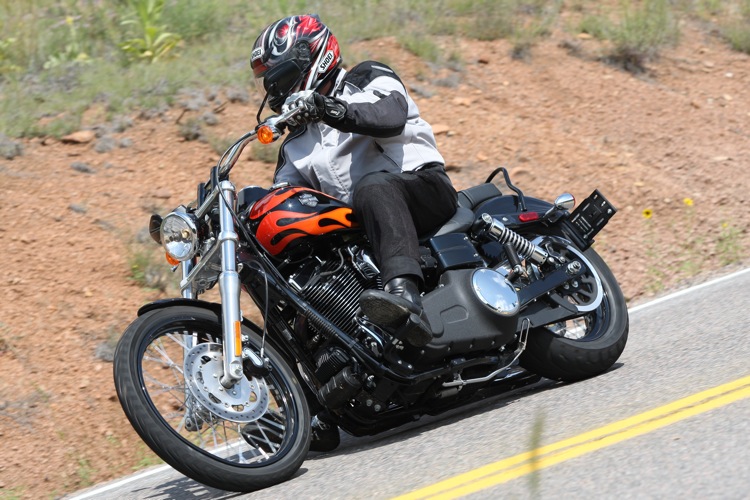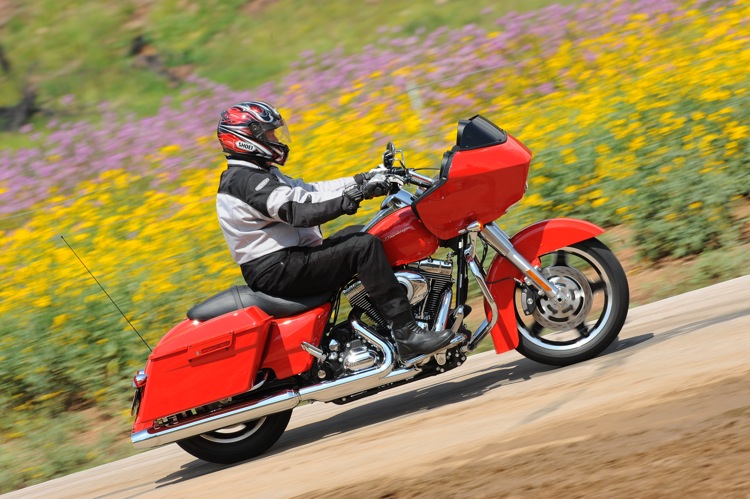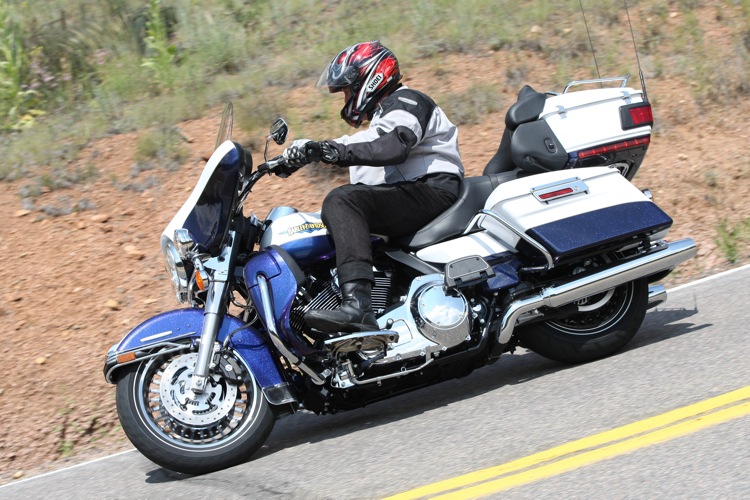2010 Harley-Davidson Lineup

Battling a tough recession, Harley-Davidson unveiled its new lineup in Denver recently with some exciting changes. Bill Davidson, Vice President of Core Customer Marketing, said, "This ambitious new motorcycle launch reaches to our riders with the incredible passion that Harley-Davidson has inspired for more than a century. We are thrilled to offer our customers nine new models and a full selection of products for 2010 that lets their enthusiasm for enjoying great motorcycles continue at full throttle."
These new models (including the CVOs covered in our last issue) represent the largest number delivered in the Motor Company's history. Although there aren't any new platforms or engines, a host of changes and up-grades provide more luxury, power, value and style.
Topping the touring line is the Electra Glide Ultra Limited, which gets the bigger Twin Cam 103 engine that delivers 10 percent more torque than the TC96 engine, plus added standard equipment. Features include dual front brakes with ABS, heated grips, a security system and Tour Pak luggage. Special two-tone paint will be offered, along with unique 28-spoke wheels, dash trim and badges.

The new Road Glide Custom gets a hot-rodded look with a one-inch lowered rear suspension, 18-inch front wheel, and new 2-into-1 exhaust. A low-profile windscreen tops the frame-mounted fairing with dual headlamps and a slew of gauges, while new rear lighting and a premium audio system round out the features.
Back is the Wide Glide Dyna model, done up in old-school chopper style with black, laced wheels, a chopped rear fender, short black sissy bar, tommy-gun exhaust and an optional flame paint job. It has a black battery box with a chromed "Wide Glide" logo, a mini sissy bar and the front of its 4.7-gallon fuel tank is raised 3/4 of an inch to accentuate the feeling of sitting "in" the bike. There's no traditional taillight, instead the red turn signals double as brake lights (first seen on Sportster Nightsters).
Dressed in satin chrome and dull "denim" black, the new Fat Boy Lo uses the signature styling cues of the popular Fat Boy series, including the beefy fork, solid-disc wheels and Fat Bob gas tank on the Softail chassis. An over/under shotgun exhaust with flat-black header shields, "Bullet Hole" 17-inch cast-aluminum wheels, with a wide 140mm front tire and a 200mm rear, carry on the Fat Boy look. H-D achieved the "Lo" part by dropping the rear suspension 1.15 inches and adding a slimmer seat, resulting in the lowest seat height of any Harley at a ground-hugging 24.25 inches. Combined with a reshaped handlebar, it's designed to appeal to newcomers and inseam-challenged riders.

The Street Glide is the original stripped and low-riding bagger from Harley, but now it's infused with more hot-rod attitude, sporting a bigger (18-inch) front wheel, slimmed-down exhaust, a smoked mini-windscreen and new tail lamp layout. The rear suspension is dropped an inch, plus "ground effects" trim further underscores the Street Glide's slammed look.
A new Street Glide Trike brings hot-rod styling to the three-wheeled line, too. Coming with a smoked mini-wind deflector and without the Tour-Pak luggage carrier, this slick new trike is powered by the potent TC103 engine and offers an optional reverse.
This year's VRSC performance lineup continues the V-Rod, Night Rod Special and V-Rod Muscle. The budget-stretching Sportster line offers six models, including the lowest-priced ,999 Iron 883, which was introduced last year, and four others selling for less than 10 grand.
The Ride
For two glorious days we rode the rugged Rockies west of Denver, sampling and switching between two dozen 2010 models. The scenery is beautiful, but riding nearly two miles high in the mountains saps almost a third of engine power compared to sea-level performance. Even in those challenging conditions, however, we found fuel injection's throttle response to be smooth and linear on all of the bikes, with a very usable mid-range.

Softails are fitted with a counterbalanced version (TC96B) of the 96-inch V-Twin to reduce vibration, which is solid mounted to the frame for increased chassis stiffness. The other Big Twins use rubber mounting to isolate the shaking, rather than counterbalancing. At cruising speeds, the rubber-mounted engines are smooth, but near idle they shake strongly. On the other hand, Softails idle more smoothly, but vibes increase with rpm to a moderate (but still acceptable) level at cruising speeds. Vibration seems to have increased in the Twin Cam engines as displacement, and therefore reciprocating mass, has increased from the original 88-inch motors to the 96, 103 and 110 inchers.
Harley's Big Twins all come with the six-speed Cruise Drive transmission, which now has a helical-cut fifth gear that noticeably reduces gear whine. Gear selection is a tad clunky but effective, with no missed gears, and neutral easy to find. Clutch effort on all the bikes is light, and engagement is solid and chatter-free.
Cranking out 10 percent more torque than the TC96 engine, the big 103-incher in the Electra Glide Ultra delivered a noticeable gain in performance compared to the 96. Even in the thin mountain air the Big Twin pulled with authority and got us up the passes quickly. The stiffer frame introduced last year also provided improved handling.

Braking on the models with dual front discs is strong and effective, and the ABS works well, but we'd like to see two rotors up front on more models. Touring models use 180/65-16 rear tires, which have a dual-compound with harder center tread compound and softer shoulder rubber. We found these work well in the twisties, offering good grip when leaned over. However, there were some "pucker" moments when we quickly touched down on hard parts. Don't ask me how I know.
Harley has been dropping seat heights to give potential buyers and riders more confidence. It may do this and look cool, but it also tends to make tall folks feel cramped. Therefore, we also would like to see some adjustability in handlebars, pegs, footboards and seats to accommodate everyone. Lowered suspensions result in less suspension travel and that means a harsher ride over bumps. A "slammed" bike also decks out sooner in the corners and limits lean angle, preventing the bike from cornering as tightly as it otherwise could. The serpentine mountain roads caused a lot of scraping in corners, and the floorboards on the Fat Boy Lo and other lowered models dragged early and often. Buyers should consider these factors before choosing a lowered model over a conventional one.
Our time aboard each bike was too short to provide an in-depth analysis, but overall the new Harley lineup looks to be better than ever. Although we want more cornering clearance and less weight across the line, much of Harley's core audience doesn't seem to mind. Fit, finish and plating are top notch and reliability seems to be excellent. And thanks to continuous refinement, evident throughout the line, and the improvements in styling, performance and ergonomics, we strongly suspect the Harley brand will be around for a good long time.














